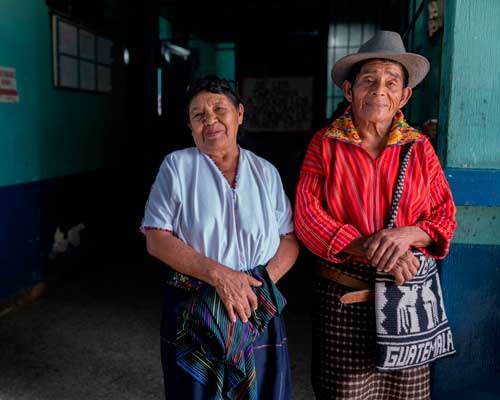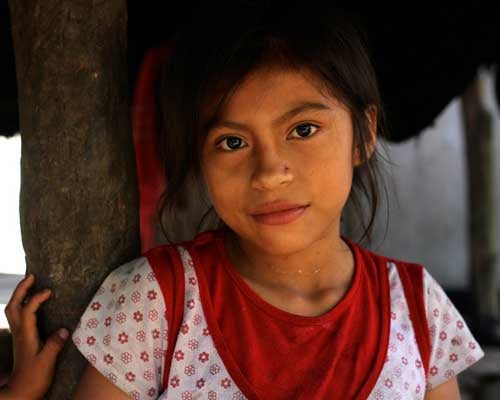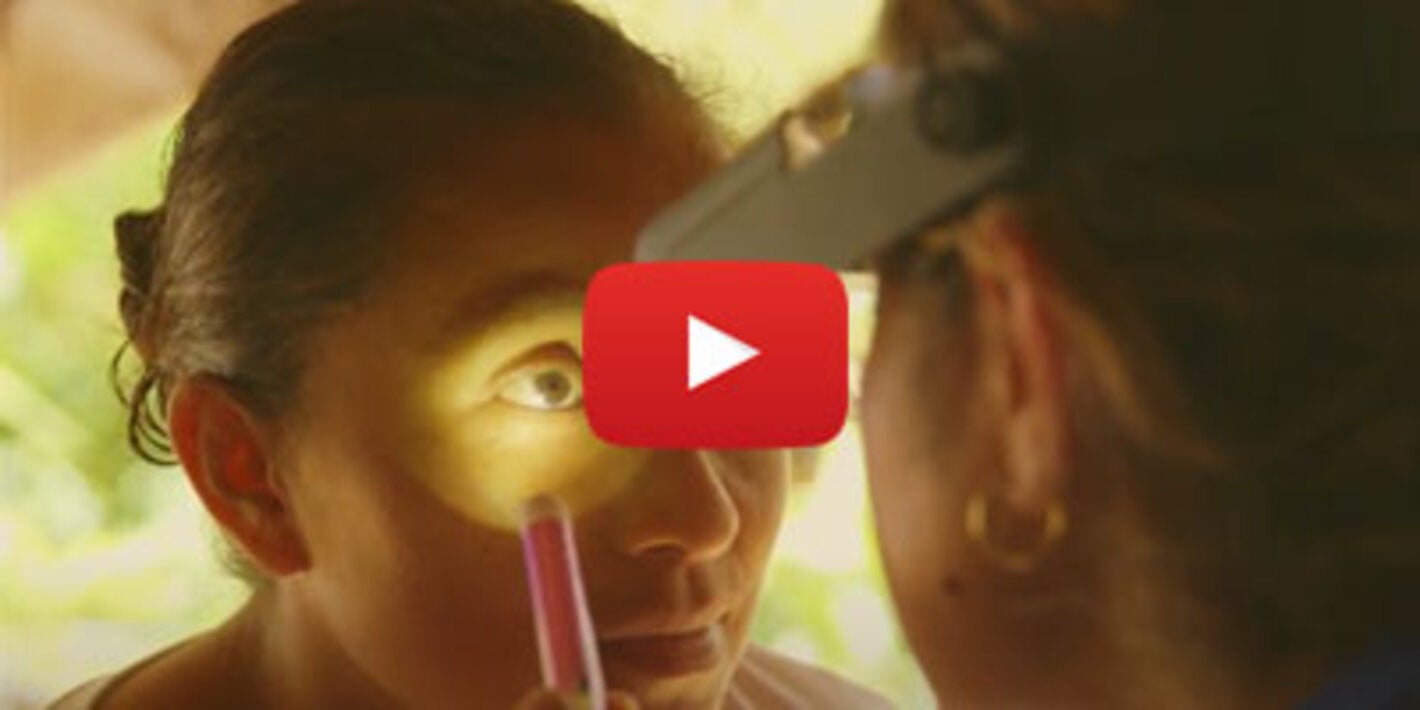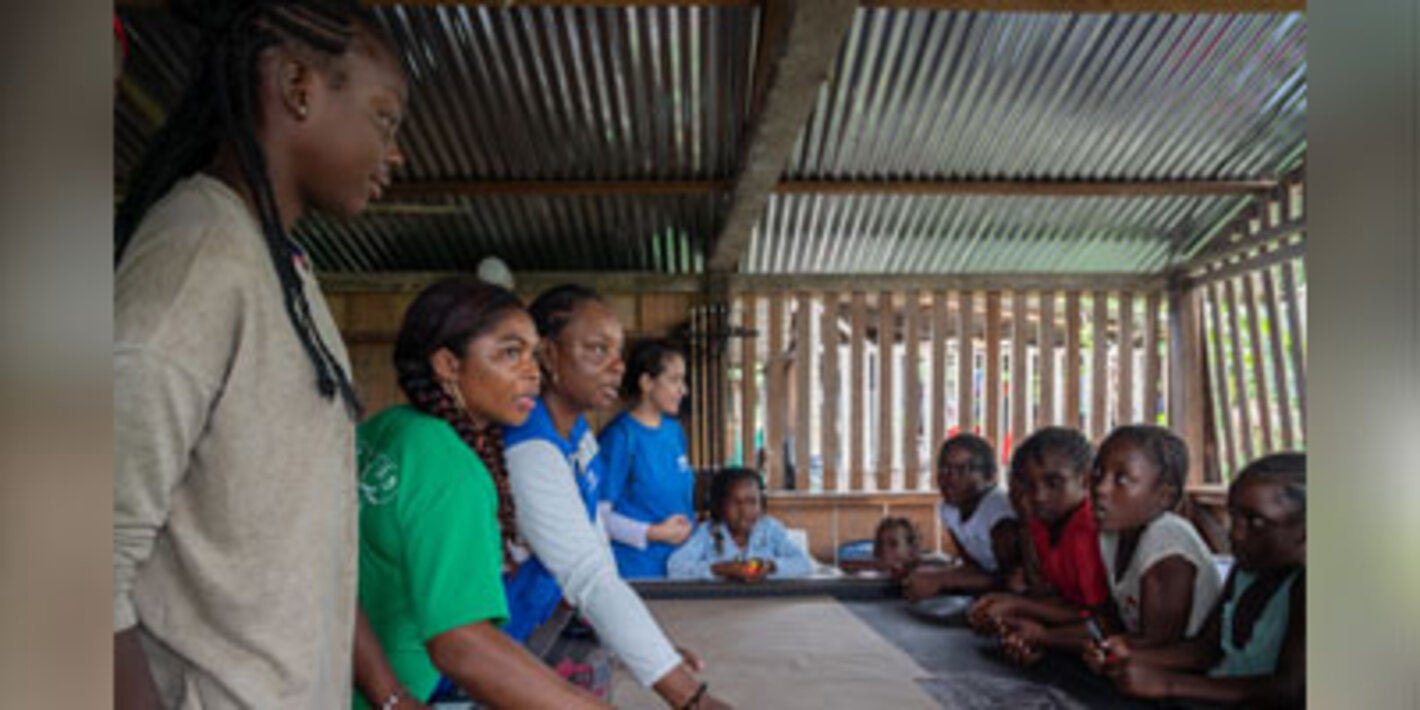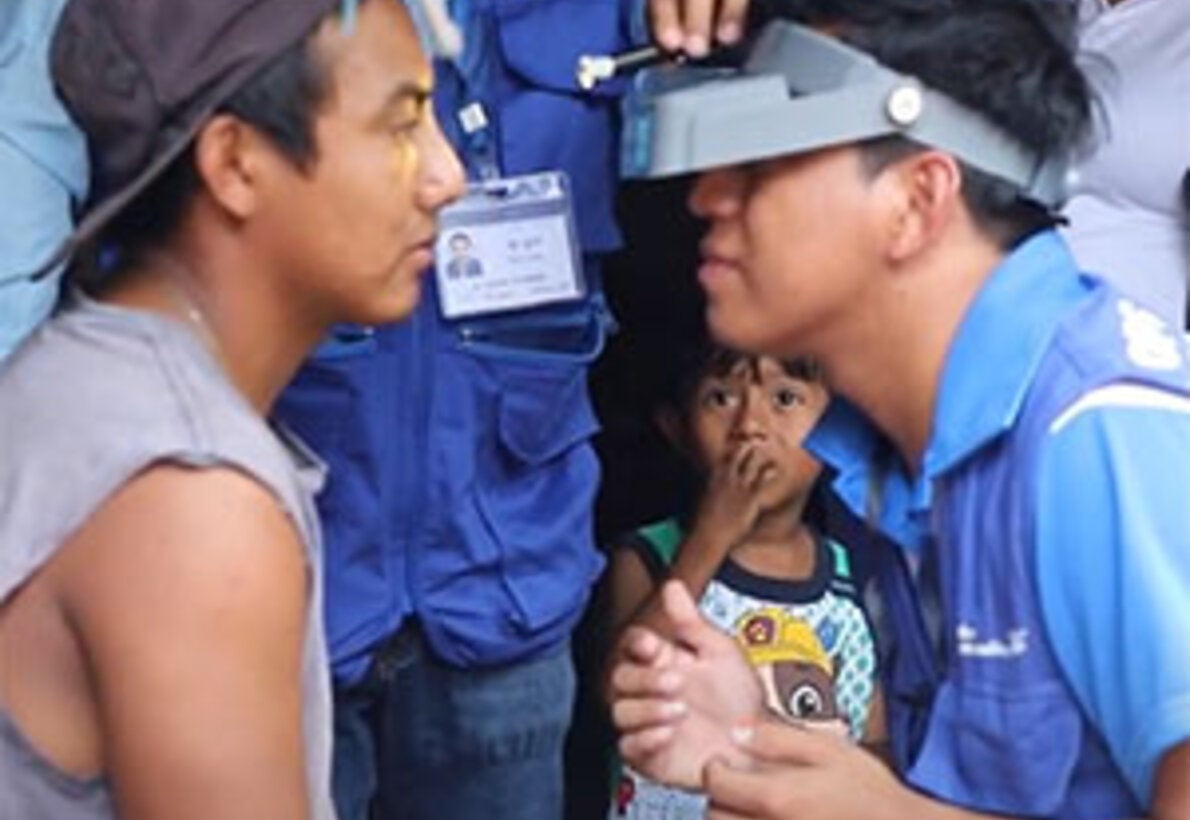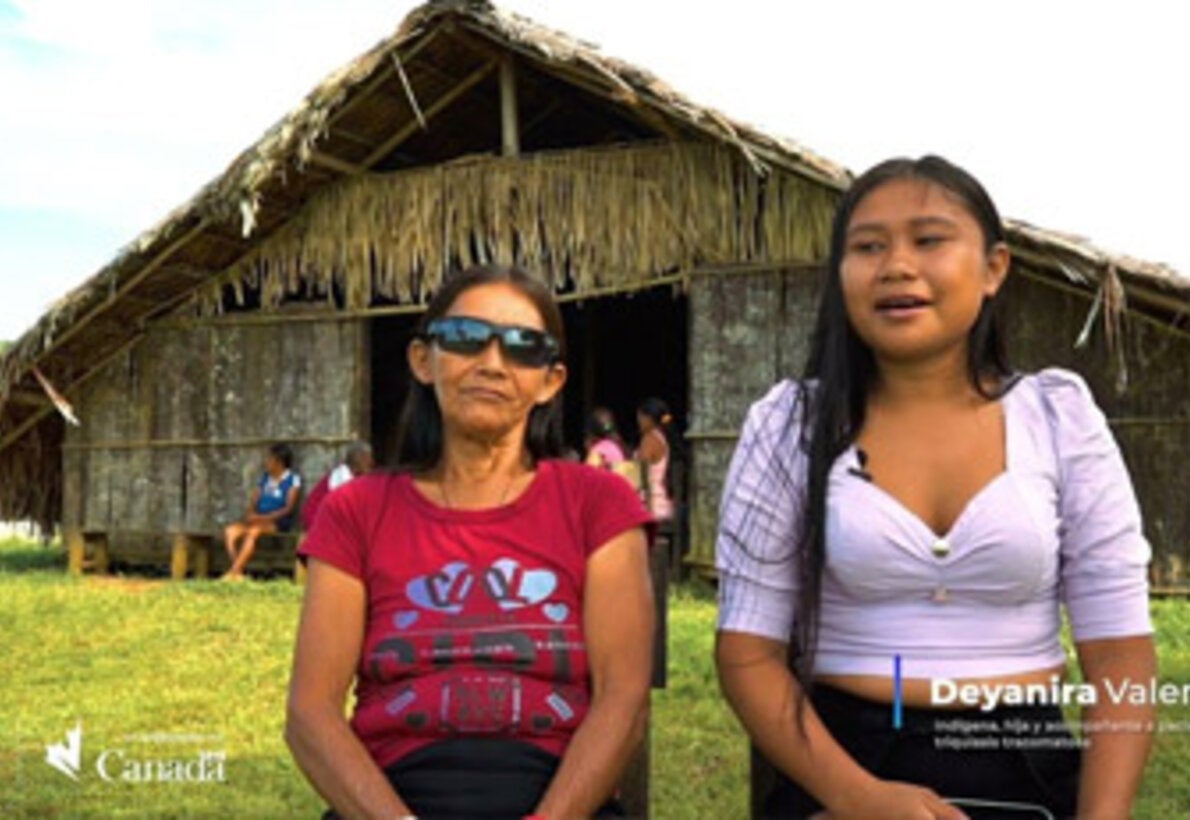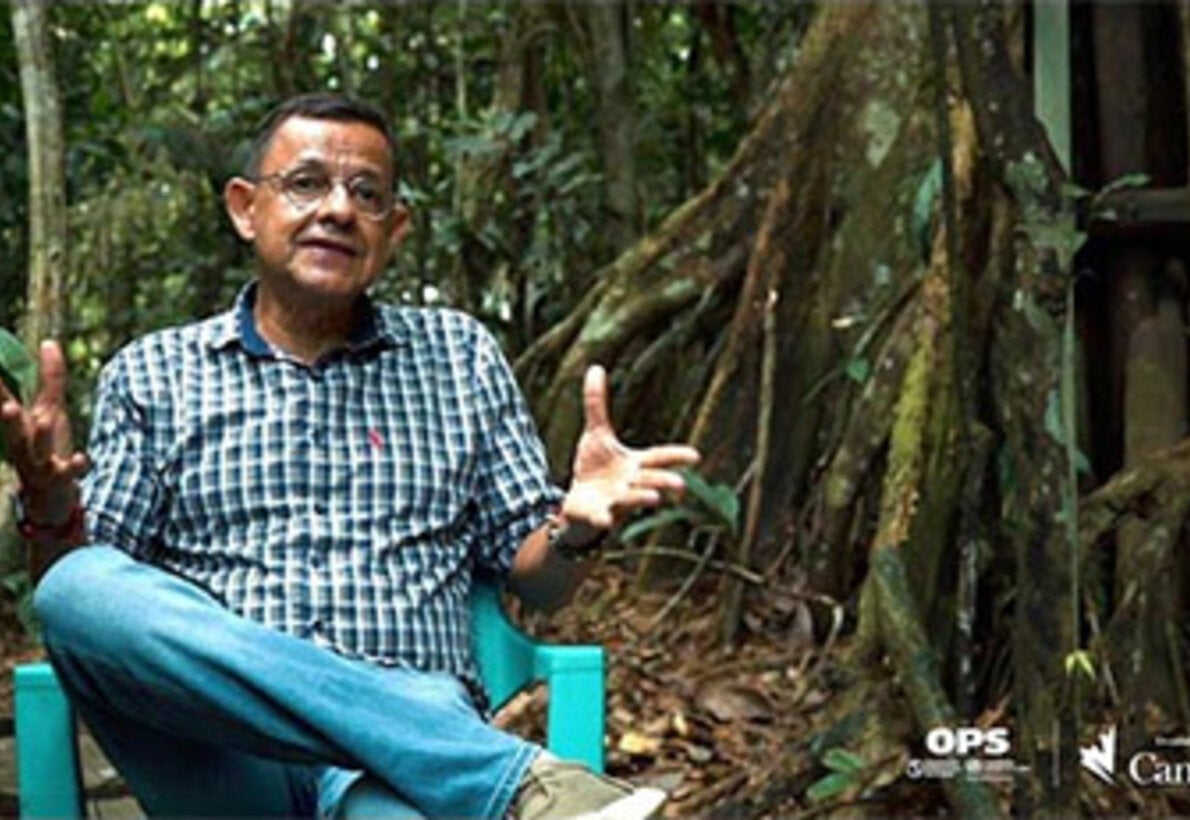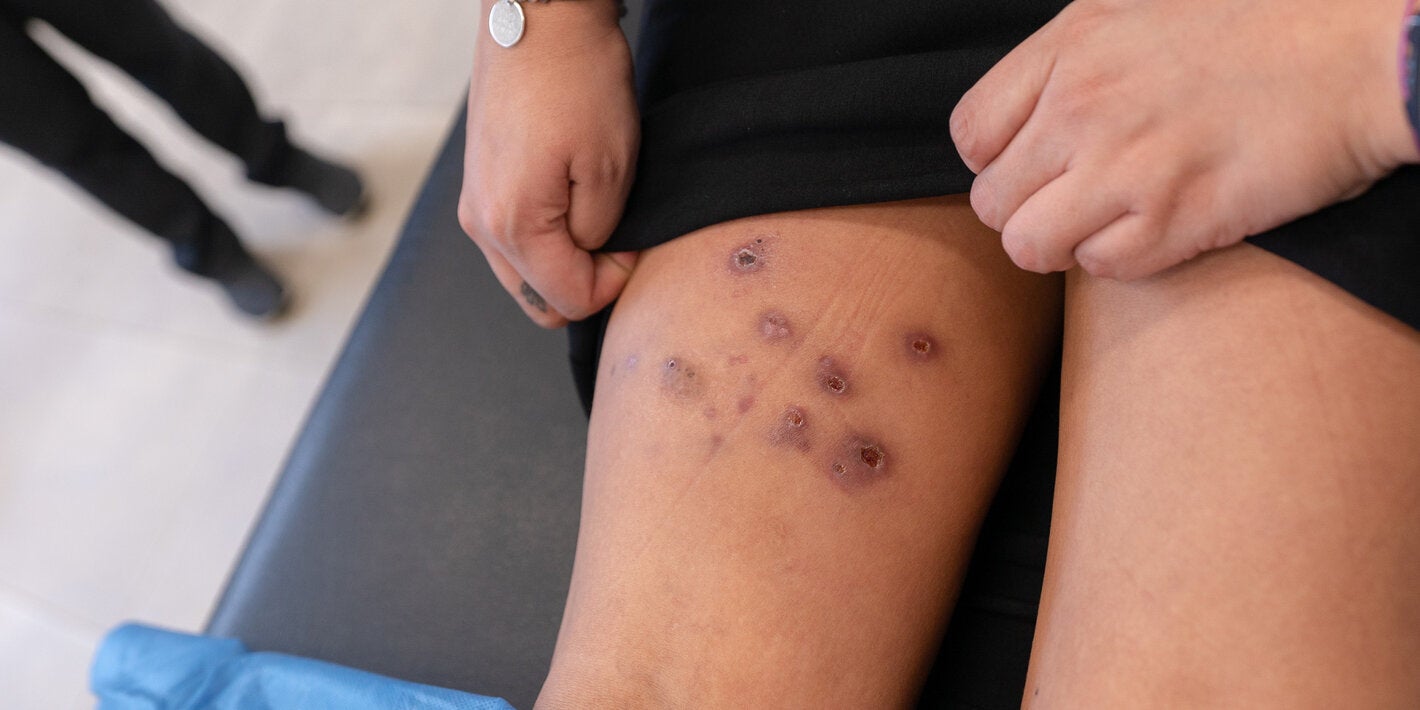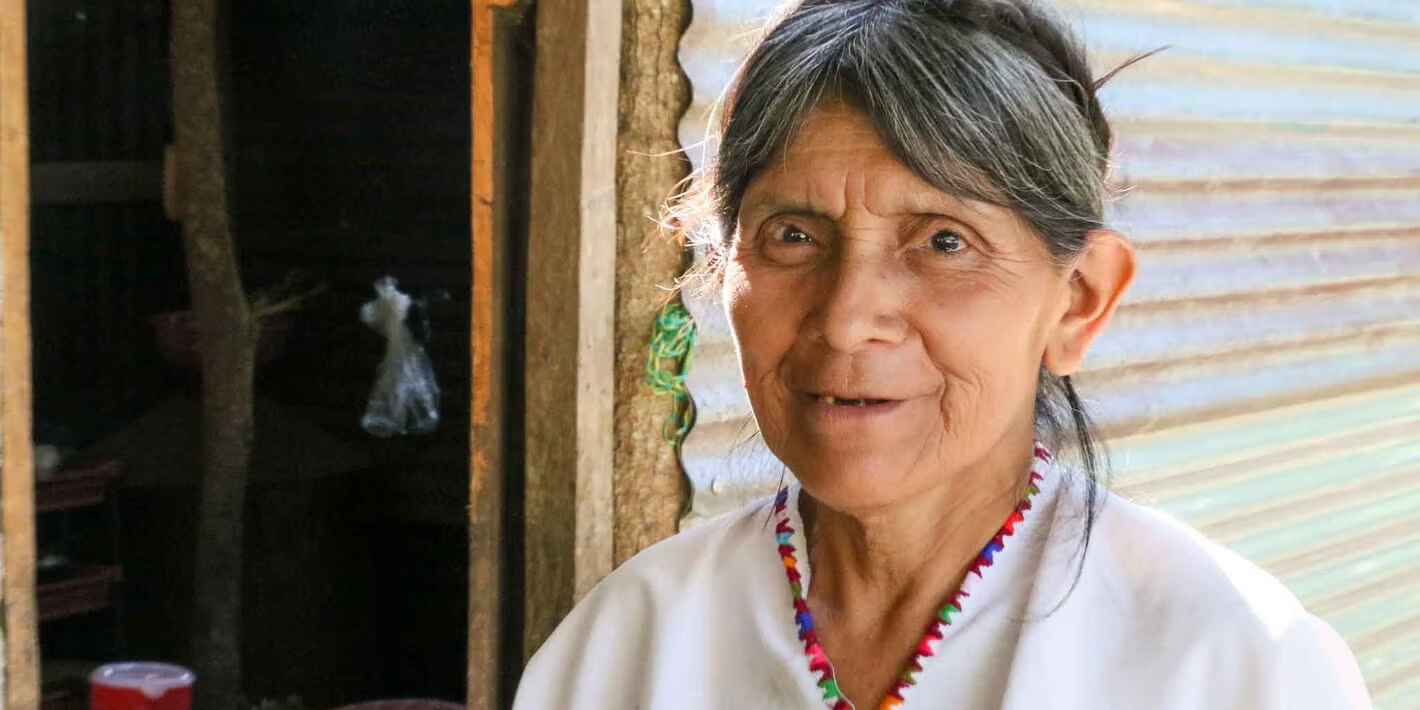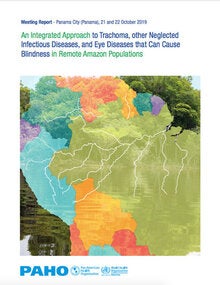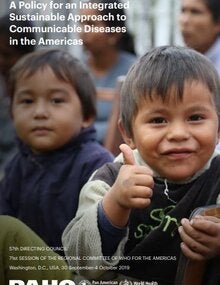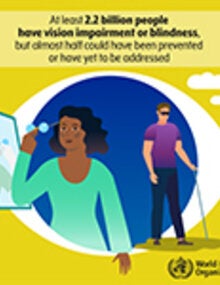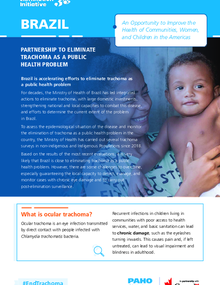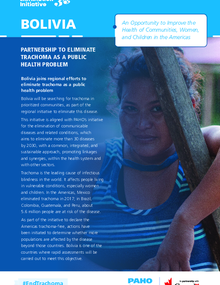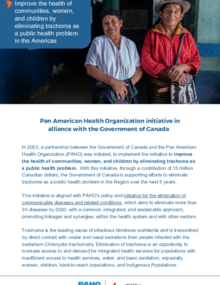SUBMENU
Trachoma is the leading cause of infectious blindness worldwide and is transmitted by direct contact with ocular and nasal secretions of persons infected with particular serovars of the bacterium Chlamydia trachomatis.
The active form of the disease presents as an inflammatory conjunctivitis, repeated episodes of which may result in scarring of the conjunctiva, leading in some cases to inversion of the eyelashes toward the eye. When one or more eyelashes of the upper eyelid turned inward and rub against the eye, or there is evidence of recent eyelash epilation of eyelashes directed toward the eye, trachomatous trichiasis (TT) occurs. This is the chronic form of the disease, which, if left untreated, can lead to the development of corneal opacity, visual impairment, and blindness.
In the Region, trachoma is endemic in rural and remote areas from Brazil, Colombia, Guatemala, and Peru, where there are about 5.6 million people at risk from the disease, which disproportionately affects women and children. In 2017, Mexico became the first country in the Region to eliminate trachoma as a public health problem.
Trachoma can be eliminated as a public health problem. The SAFE strategy is the trachoma elimination strategy recommended by the World Health Organization (WHO), which includes interventions in S-surgery for TT management, A-antibiotics to treat infection, F-facial hygiene, and E-improved environmental conditions (improved access to water and basic sanitation) to prevent infection and interrupt disease transmission.
Elimination of trachoma as a public health problem is defined by:
- a prevalence of cases of trachomatous trichiasis (TT) "unknown to the health system" of less than 0.2 % in adults aged 15 years or older (approximately 1 case per 1000 population);
- a prevalence of trachomatous follicular inflammation (TF) in children aged 1-9 years of less than 5%, maintained for at least two years without massive administration of antibiotics, in all districts where the disease was previously endemic;
- the existence of a health system capable of detecting and managing new cases of TT using defined strategies, with evidence that sufficient financial resources are available to implement these strategies.
Repeated infection with Chlamydia trachomatis over many years causes scarring on the inside of the upper eyelid, which causes the eyelashes to turn inward and rub against the eyeball. Scarring of the eyelid also affects tear secretion and causes dryness of the eye. These conditions increase the risk of corneal ulceration and scarring. Corneal scarring impairs vision. If left untreated, this condition can lead to corneal clouding and blindness. The sequelae of trachoma appear in adulthood and middle age.
Active disease is common in children aged 1 to 9 years, and especially in preschool children under 5 years of age. It mainly affects people in vulnerable conditions and disproportionately affects women and children. Adult women have a higher risk than adult men of developing blindness as a complication of trachoma, which is explained by the fact that women tend to spend more time in close contact with young children, who are the main reservoir of infection.
Globally, in April 2023, an estimated 115.7 million people lived in areas where the prevalence of trachoma in children aged 1 to 9 years was ≥5%, down from 125 million as of June 1, 2022. The estimated global burden of trachomatous trichiasis in 2023 was 1.5 million cases. Trachoma remains endemic in many remote and poor rural areas of Africa, Asia, Central and South America, Australia, and the Middle East.
In the Region of the Americas, there is evidence of trachoma in four countries and an estimated 5.6 million people live in areas where elimination interventions need to be implemented-Colombia, Brazil, Guatemala, and Peru. Mexico reached the elimination target in 2017. Some countries with populations in vulnerable conditions where trachoma is suspected to be a public health problem require evidence collection for a future elimination validation process in the Region of the Americas.
Elimination programs in trachoma endemic countries are implementing the WHO-recommended SAFE strategy consisting of:
- S-surgery to treat the chronic damage of the disease (trachomatous trichiasis).
- A-antibiotics to eliminate the infection, in particular mass administration of azithromycin, which the manufacturer donates to elimination programs through the International Trachoma Initiative (ITI).
- F-facial hygiene, and
- E-environmental improvement, particularly access to safe water and sanitation.
The main risk factors for the occurrence of the disease are related to lack of access to water, the presence of flies, poor hygienic conditions, and overcrowding. Repeated infections since childhood and during youth seem to be necessary to produce the complications that occur later in life. A single episode of acute C. trachomatis conjunctivitis is not considered vision threatening because there is virtually no risk of prolonged inflammation or chronic complications.
Major interventions should be directed at preventing trachoma infection including improved sanitation and increased facial hygiene activities (with clean water) for children at risk for the disease. The pain and suffering due to trachomatous trichiasis, which can eventually cause visual impairment and irreversible blindness, can be alleviated by a simple surgical procedure performed locally.
Depending on the prevalence of follicular trachomatous inflammation (TF) in children aged 1 to 9 years at the district level, mass administration of antibiotics to all residents of these communities is recommended once a year. WHO recommends two antibiotics for the control of trachoma: tetracycline 1% in ophthalmic ointment for children under 6 months, and oral azithromycin.
The Global Alliance for the Elimination of Trachoma by 2020 GET2020 (Global Elimination of Trachoma) was launched under the leadership of WHO in 1996. The Alliance is a partnership that supports the implementation of the SAFE strategy by Member States and the strengthening of national capacity through epidemiological surveys, monitoring, surveillance, project evaluation and resource mobilization.
Through this initiative, elimination activities are implemented through primary health care based on the SAFE (Surgery, Antibiotic, Facial cleanliness and Environmental improvement) strategy. The strategy includes four basic components, aimed at pharmacological treatment of the infection, surgical treatment of trichiasis and implementation of sanitary, educational, and environmental measures to prevent the emergence of new cases.
In 2021, the Neglected Tropical Diseases Roadmap 2021-2030 was launched. The roadmap sets global targets to prevent, control, eliminate, and eradicate a diverse set of neglected tropical diseases (NTDs) and disease clusters by 2030. The roadmap has three strategic shifts: it calls for measuring impact and not just process, employing integrated activities, and for programming to be country-driven rather than donor-driven.
- PAHO/WHO supports countries in implementing the SAFE (Surgery, Antibiotic, Facial cleanliness and Environmental improvement) strategy, which consists of implementing surgery to correct trichiasis, antibiotic treatment (azithromycin) to treat C. trachomatis infection, facial hygiene and environmental improvement to reduce person-to-person transmission.
- The World Health Assembly adopted resolution WHA51.11 in 1998, which aimed at the global elimination of trachoma as a public health problem by 2020. The Roadmap for NTDs 2021-2030, which the World Health Assembly endorsed in 2020 in its decision 73(33), extended the new deadline for the global elimination of the disease to 2030.
- PAHO is promoting an initiative for the elimination of communicable diseases and related conditions, which aims to eliminate more than 30 diseases by 2030 (including trachoma), with a common, integrated, and sustainable approach, promoting linkages and synergies within the health system and with other sectors.
- The Organization supports the regional forum in which the countries of the Americas that have had communities affected by trachoma (Brazil, Colombia, Guatemala, Peru, and Mexico) participate, as well as other countries in which information needs to be gathered. At this forum, these countries, together with experts from other organizations, analyze the situation in the Region and provide technical recommendations for the elimination of trachoma.



